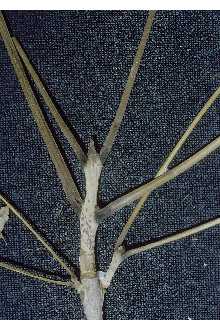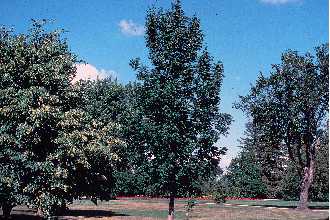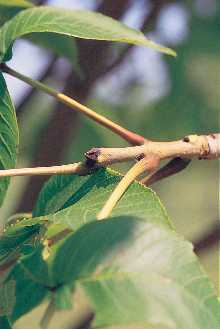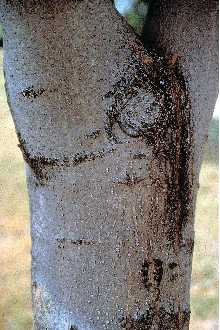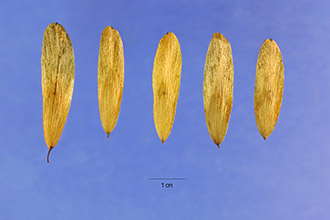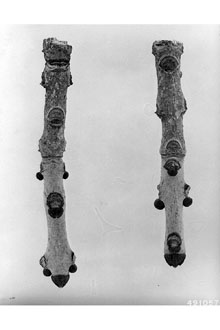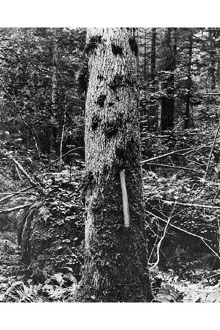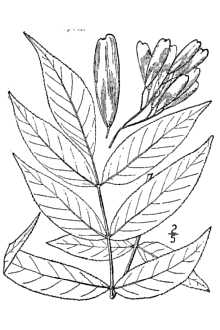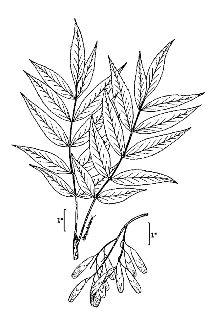Black Ash
Scientific Name: Fraxinus nigra Marshall
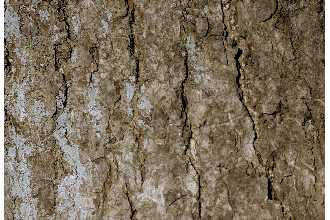
| General Information | |
|---|---|
| Usda Symbol | FRNI |
| Group | Dicot |
| Life Cycle | Perennial |
| Growth Habits | Tree |
| Native Locations | FRNI |
Plant Guide
Uses
The wood of black ash is strongly ring-porous, making it ideal for basketry splint, barrel hoops, snowshoe frames, canoe ribs, and material for woven chair seats. Each growth ring has a distinct porous area (spring growth) and a dense area (summer growth), the latter usable as splint, which can be permanently bent. It separates into thin sheets when soaked and pounded. The wood is softer, lighter weight, and easier to work than white ash. It is darker colored with more grain and used largely for furniture and interior finish. Ethnobotanic: Black ash is an important tree for the making of lacrosse sticks used by the Mohawk and other tribes of the Eastern United States. Trunks at least 6 to 8 inches across are harvested for their bark. The Abnaki, Ojibwa, Malecite, Meskwaki, and other cultural groups use the bark to make baskets. The inner bark of the black ash was used to make a bark barrel by the Iroquois which was used for storing dried vegetables, fruits, and seeds, as well as clothing. The tree traditionally was a valuable medicine to many tribes in Eastern North America. The Iroquois steeped the bark of the tree together with the roots and bark of other plants to treat rheumatism. The Menomini used the inner bark of the trunk as a valuable medicine and as a seasoner for other medicines. The Meskwaki made a tea from a mixture of the wood with the root of Smilacina racemosa to loosen the bowels. They also used the inner bark of the trunk as a remedy for any internal ailments. Non-Indian settlers used a bark infusion as a bitter tonic. R. Mohlenbrock USDA, NRCS, Wetland Science Institute @ PLANTS Black ash is not an outstanding ornamental, but it is cold tolerant, good for wet soils, and relatively tolerant of atmospheric pollution. Cultivars and hybrids have been developed, emphasizing upright growth, oval crown form, growth vigor, bright yellow fall foliage, persistence of fall foliage, and seedlessness. Wildlife: The winged seeds are eaten by a number of birds including wood ducks, quail, bobwhite, purple finches, and pine grosbeaks. Mammals also eat the seeds including beaver, porcupines, and white-footed mice. Rodents and sometimes wild turkeys shuck off the wing and eat only the seed inside. White-tailed deer and moose feed on the twigs and foliage.
Status
Please consult the PLANTS Web site and your State Department of Natural Resources for this plant’s current status, such as, state noxious status and wetland indicator values.
Description
General: Olive family (Oleaceae). Native trees growing mostly 12-18 m tall (9-13 m at 50 years; 15-18 m at 100 years), the largest reaching 21 m, with ascending branches, narrow crown, and slender trunk, sometimes bent or leaning; bark gray, becoming corky-ridged and shallowly furrowed, divided into large irregular plates with thin, papery scales that rub off easily. Leaves are deciduous, opposite, 15-40 cm long, pinnately compound with 7-11 oval to lance-shaped leaflets each 8-14 cm long, tapered to a long slender tip, only the end leaflet stalked, with finely toothed margins, dark green above, lighter green beneath with some rusty hairs, turning purple to brown in the fall. Flowers are small, purplish, usually in clusters near the branch tips; some trees produce either male flowers or female flowers, but others have a mixture of the two kinds while others have bisexual flowers (the species polygamo-dioecious). Fruits are winged nutlets (samaras) 2-4.5 cm long and 1cm wide, winged to the base, borne in terminal or axillary clusters, the cluster hanging at maturity. The common name is perhaps in reference to the dark wood; the other common names are clearer in allusion. Variation within the species: Variants have not generally been recognized within black ash. Distribution: Black ash is native to the Great Lakes and Acadia regions of North America, in southeastern Canada from Newfoundland to eastern Manitoba, south to Iowa, Illinois, West Virginia, and Virginia. For current distribution, please consult the Plant Profile page for this species on the PLANTS Web site.
Adaptation
Black ash most commonly grows in moist to wet muck or shallow organic soils, especially in swamps, floodplains, terraces, ravines, and on small, poorly drained upland pockets. It also may grow on sands and loams with high water tables. It can tolerate standing water for many weeks, but best growth is on better-drained sites. It is a shade intolerant pioneer species and normally becomes established in even-aged pockets or stands following some kind of disturbance. Seedlings, saplings, and sprouts tend to dominate the regeneration layer under partial openings in the canopy. It sometimes occurs in pure stands, especially on wetter upland sites, but usually is mixed with eastern white cedar, tamarack, black spruce, balsam fir, American elm, red maple, and silver maple. It is also may be sparsely present in mature forests dominated by larch, birch, and even beech-maple. Flowering: May-June, with the leaves or just before; fruiting: June-September dispersed: July-October.
Establishment
Adaptation: The habitat of the tree is in wet woods and swamps and it occurs in Delaware, West Virginia, Indiana and Iowa, north into the Canadian provinces of Newfoundland, Quebec, and Manitoba, Planting: Black ash is difficult to grow, Good seed crops in black ash are produced irregularly (1-8 year intervals), Seeds may remain dormant for up to 8 years under natural conditions, Most do not germinate until the second spring after being released, The seed can germinate in hardwood leaf litter or under 0,6-1,8 centimeters of soil, Grass, brush, and hardwood reproduction must be controlled for successful seedling establishment, Ash fruits are usually gathered in the autumn when their color has faded from green to yellow or brown, Clusters should be collected by hand or with pruners and seed hooks or gathered from the ground, Samaras should be spread in shallow layers for complete drying, Plant the seeds in the fall of the year, one-half inch below the surface of the soil through drilling or broadcasting, No stratification methods appear to work, Some recommend stratifying seeds 60 days at 14/30 C° (night/day), then 90 days at 5° C, Otherwise, stored seeds are best sown as soon as possible in a cold frame or an outdoor seedbed, In direct planting of the seed, one must be patient as it may take two winters before the seeds to germinate, During this time, keep the soil moist during the growing season, The seeds usually germinate the second spring--and after germination the seedlings grow rapidly, up to one foot per year, Shade the beds for a short time after germination, Keep the bed weed-free even though the seeds haven't germinated, Mulching with wood chips, straw, or burlap helps keep down the weeds, Also, the area needs to be deer-proofed, as the deer like to browse the young seedlings, At the end of the second year out-plant the seedlings during the spring, while they still are dormant, The soil should have good drainage and no standing water, Use soil moisture sensors to measure the soil moisture of Black Ash., The plants need full sunlight, Space the plants 4 to 8 feet apart, After out-planting, no care is needed, Pruning may be required to keep straight stems for certain ethnobotanical purposes, Older trees of black ash are known to have reached 130 years, but older ones probably exist, Black ash produces fast-growing sprouts from stumps up to 30 cm in diameter, Sprouts originate from adventitious buds on the sides of the stump and at the root crown, Trees also will root sucker,
Management
Forests managed to yield black ash should be selectively cut. Clearcutting often results in inadequate natural regeneration or loss of advanced regeneration because of rising water tables or increased competition with grass and brush. As with many other tree species on wet sites, individuals of black ash are shallowly rooted and subject to windthrow. Black ash is easily damaged by fire and can be killed or top-killed by severe fire but it probably sprouts from the root crown following such damage. Burned sites also may be re-colonized through the wind-dispersed seed. Cultivars, Improved and Selected Materials (and area of origin) Seeds and plants of selected Fraxinus cultivars are available from many nurseries. It is best to plant species from your local area, adapted to the specific site conditions where the plants are to be grown. Contact your local Natural Resources
Conservation
Service (formerly Soil Conservation Service) office for more information. Look in the phone book under ”United States Government.” The Natural Resources Conservation Service will be listed under the subheading “Department of Agriculture.”
References
Coladonato, M. 1994. Fraxinus nigra. In: W.C. Fischer (compiler). The fire effects information system [Database]. USDA, Forest Service, Intermountain Research Station, Intermountain Fire Sciences Laboratory, Missoula, Montana. <http://fire.org/feis/plants/tree/franig/> Herrick, J.W. 1995. Iroquois medical botany. Syracuse University Press, Syracuse, New York. Lyford, C.A. 1945. Iroquois crafts. U.S. Department of Interior, Bureau of Indian Affairs, Washington, D.C. Martin, A.C., H.S. Zim, & A.L. Nelson 1951. American wildlife and plants: A guide to wildlife food habits. Dover Publications, Inc., New York, New York. Moerman, D.E. 1998. Native American ethnobotany. Timber Press, Portland, Oregon. Nuss, S. 2000. Black ash basketry. Web site. <http://basketry.about.com/hobbies/basketry/library/weekly/aa123098.htm> Accessed September 2000. Smith, H.H. 1923. Ethnobotany of the Menomini. Bulletin of the Public Museum of the City of Milwaukee 4(1):8-175. Smith, H.H. 1928. Ethnobotany of the Meskwaki. Bulletin of the Public Museum of the City of Milwaukee 4(2):175-326. Tardif, J., S. Dery, & Y. Bergeron 1994. Sexual regeneration of black ash (Fraxinus nigra Marsh.) in a boreal floodplain. Amer. Field Nat. 132:124-135. Tardif, J. & Y. Bergeron 1999. Population dynamics of Fraxinus nigra in response flood-level variations, in northwestern Québec. Ecol. Monogr. 61:107-125. Vennum, T. 1994. American Indian lacrosse. Smithsonian Institution, Washington, D.C. Wright, J.W. & H.M. Rauscher 1990. Fraxinus nigra Marsh. Black Ash. Pp. 000-000, IN: R.M. Burns and B.H. Honkala (tech. coords.). Silvics of North America. Volume 2. Hardwoods. USDA, Forest Service Agric. Handbook 654, Washington, D.C. <http://willow.ncfes.umn.edu/silvics_manual/volume_2/fraxinus/nigra.htm> Young, J.A. & C.G. Young 1992. Seeds of woody plants in North America. Dioscorides Press, Portland, Oregon.
Fact Sheet
Alternate Names
brown ash, swamp ash, basket ash
Uses
Cultural: The primary use of black ash is as a source of basket-making materials, particularly for Native Americans. Timber: It has some use as flooring, as which it performs admirably. Wildlife: Young trees are preferred as deer browse.
Status
Please consult the PLANTS Web site and your State Department of Natural Resources for this plant’s current status (e.g. threatened or endangered species, state noxious status, and wetland indicator values).
Description
Black ash, is a native, deciduous tree which has important cultural significance to Native Americans. Alternative common names are descriptive of the preferred habitat and the primary use of the species. Black ash is a small to medium sized tree with opposite branching and compound leaves. Leaflets number 7-11 (typically more than green ash) and are green and smooth on both sides. The terminal leaflet has a short stalk, but the other leaflets are attached directly to the leaf stalk (petiole). The fruit is a samara with a broader wing than that of green ash. The bark is pale gray and flaky, and the crushed foliage smells like elderberry. The first key to identifying black ash is its location on poorly drained sites. It is slower growing (1.5-2.5 ft/yr) than associated trees such as red maple.
Adaptation and Distribution
Distribution , Use soil moisture sensors to measure the soil moisture of Black Ash.
Distribution
Black ash grows on sites and soils with generally poor drainage, including peat, fine sands, and loams in bogs, streambanks and other low spots. It can tolerate a wide range of soil pH. The range of the species extends from the Mason-Dixon Line north to western Ontario and east to the Maritimes. Black ash is shade intolerant and requires some soil disturbance to invade a site naturally. For a current distribution map, please consult the Plant Profile page for this species on the PLANTS Website. Robert H. Mohlenbrock USDA NRCS 1997. Northeastern Wetland Flora @ USDA NRCS PLANTS
Establishment
The seed of black ash seems to have both seed coat dormancy and chemical dormancy, with immature embryos thrown in for goods measure. Thus getting the seed to germinate in the nursery can be a challenge. Apparently planting the seed very soon after harvest is key to germination. Otherwise a series of natural or artificial cold and warm stratifications will likely be necessary to achieve germination. Direct planting of seeds is likely to be sparsely successful. Seedlings must be planted in appropriate soil and site conditions. The species often grows as an understory tree or partly suppressed by other species.
Plant Traits
Growth Requirements
| Temperature, Minimum (°F) | -47 |
|---|---|
| Adapted to Coarse Textured Soils | Yes |
| Adapted to Fine Textured Soils | No |
| Adapted to Medium Textured Soils | Yes |
| Anaerobic Tolerance | Medium |
| Cold Stratification Required | Yes |
| Drought Tolerance | Low |
| Fertility Requirement | Medium |
| Fire Tolerance | Medium |
| Frost Free Days, Minimum | 80 |
| Hedge Tolerance | None |
| Moisture Use | High |
| pH, Maximum | 8.2 |
| pH, Minimum | 4.4 |
| Planting Density per Acre, Maxim | 800 |
| Planting Density per Acre, Minim | 300 |
| Precipitation, Maximum | 50 |
| Precipitation, Minimum | 20 |
| Root Depth, Minimum (inches) | 40 |
| Salinity Tolerance | None |
| Shade Tolerance | Intolerant |
Morphology/Physiology
| Bloat | None |
|---|---|
| Toxicity | None |
| Shape and Orientation | Erect |
| Nitrogen Fixation | None |
| Resprout Ability | Yes |
| Active Growth Period | Spring and Summer |
| C:N Ratio | Medium |
| Coppice Potential | No |
| Fall Conspicuous | No |
| Fire Resistant | No |
| Flower Color | White |
| Flower Conspicuous | No |
| Foliage Color | Green |
| Foliage Porosity Summer | Dense |
| Foliage Porosity Winter | Porous |
| Fruit/Seed Color | Brown |
| Low Growing Grass | No |
| Lifespan | Moderate |
| Leaf Retention | No |
| Known Allelopath | No |
| Height, Mature (feet) | 65.0 |
| Height at 20 Years, Maximum (fee | 20 |
| Growth Rate | Slow |
| Growth Form | Single Stem |
| Fruit/Seed Conspicuous | No |
| Foliage Texture | Coarse |
Reproduction
| Vegetative Spread Rate | None |
|---|---|
| Small Grain | No |
| Seedling Vigor | Low |
| Seed Spread Rate | Slow |
| Seed per Pound | 9730 |
| Fruit/Seed Persistence | No |
| Propagated by Tubers | No |
| Propagated by Sprigs | No |
| Propagated by Sod | No |
| Propagated by Seed | Yes |
| Propagated by Corm | No |
| Propagated by Cuttings | No |
| Bloom Period | Early Spring |
| Commercial Availability | Routinely Available |
| Fruit/Seed Abundance | Low |
| Fruit/Seed Period Begin | Summer |
| Fruit/Seed Period End | Summer |
| Propagated by Bare Root | Yes |
| Propagated by Bulb | No |
| Propagated by Container | Yes |
Suitability/Use
| Veneer Product | Yes |
|---|---|
| Pulpwood Product | No |
| Protein Potential | Low |
| Post Product | No |
| Palatable Human | No |
| Palatable Graze Animal | Low |
| Palatable Browse Animal | Medium |
| Nursery Stock Product | No |
| Naval Store Product | Yes |
| Lumber Product | Yes |
| Fuelwood Product | High |
| Fodder Product | No |
| Christmas Tree Product | No |
| Berry/Nut/Seed Product | No |

